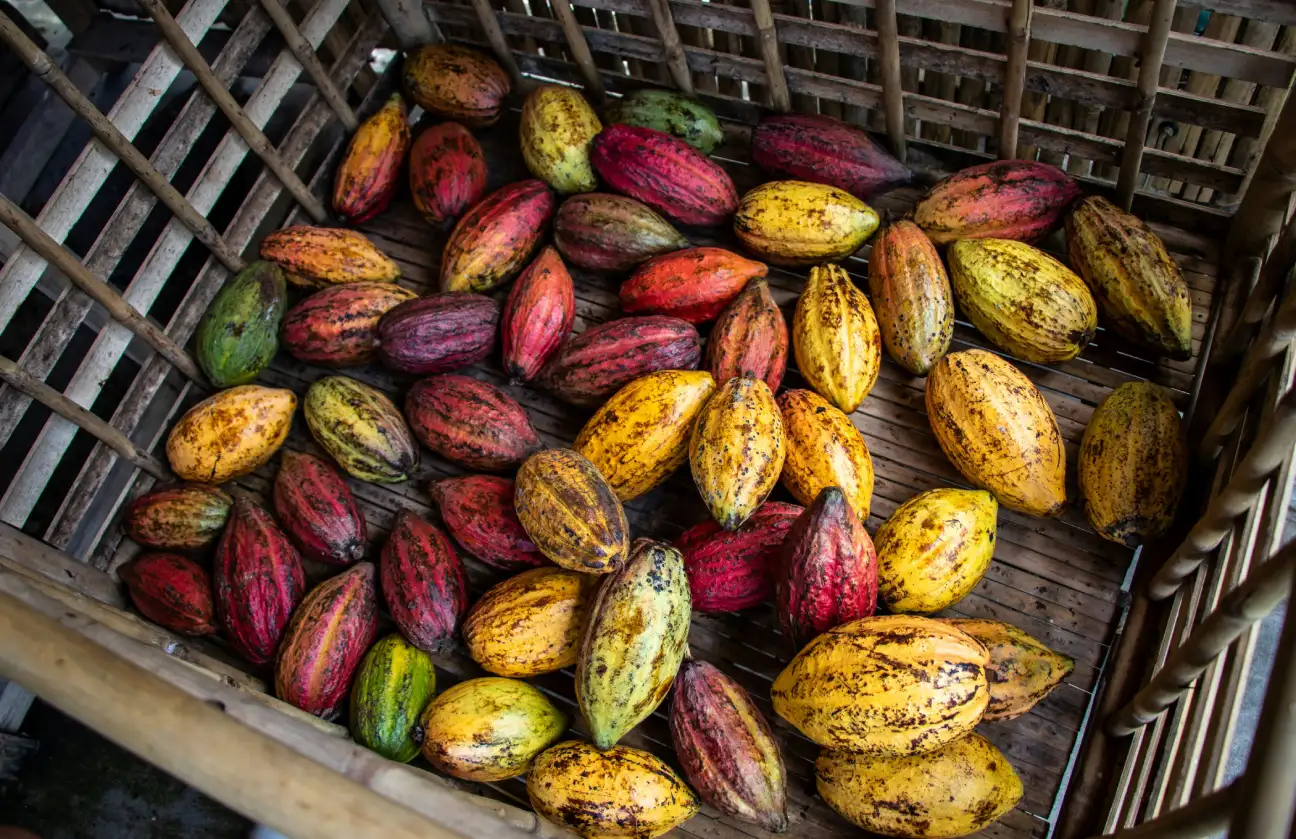
Not all cocoa is the same. For buyers, manufacturers, and formulators, it is important to understand the different cocoa bean varieties. Different cocoa species give different cocoa flavors and other product characteristics. In this article we'll discuss the most common cocoa varieties and how this may impact your business and buying decisions.
All commercial cacao beans, including Criollo, Forastero, and Trinitario, come from the same species: Theobroma cacao. The key is in the genetic differences within the species. Just like apples, grapes, or tomatoes, a single plant species can have many varieties (or cultivars) that show very different traits.
The global trade of cocoa and chocolate is led by three main cocoa types: Criollo, Forastero, and Trinitario. Each type has its own strengths and weaknesses. Knowing these differences helps buyers choose the right source based on quality, price, and how they plan to use it.
Criollo is the rarest and most delicate type of cocoa. It is known for its low bitterness, floral smell, and rich flavor. This cocoa is mostly used in high-quality chocolate. However, Criollo trees do not produce much cocoa and are prone to diseases, making them hard to find and expensive. This type of cocoa is mainly grown in Venezuela, Peru, Nicaragua, and Madagascar, and is often labeled as "fine flavor." Criollo is thought to make up about 1-5% of the world's cocoa production. Some estimates suggest it could be as low as 0.01%.
Used for: Premium chocolate, bean-to-bar production, specialty markets.
Forastero cocoa accounts for about 80-85% of the world's cocoa production. It is a tough and productive type that grows well in various climates and resists diseases. This quality makes it ideal for large farms. Its flavor is stronger, more bitter, and simpler, which is why it is commonly used in mass-market chocolate, cocoa powder, and industrial products.
Used for: Bulk chocolate, cocoa powder, industrial food applications
Trinitario is a natural mix of Criollo and Forastero cocoa beans. It was developed after a disease outbreak in Trinidad in the 18th century. This hybrid has the great taste of Criollo and the strong, high-yield qualities of Forastero. This makes it a good choice for both producers and buyers. Trinitario is mainly grown in the Caribbean, Latin America, and parts of Southeast Asia. It is often considered fine or flavor cocoa in premium markets.
Used for: High-quality chocolate, specialty blends, bean-to-bar production
Cocoa comes from many different places, each with its own types. It mostly grows in areas near the Equator. The main producers of cocoa are West Africa, Latin America, and Southeast Asia. The special climate and soil in these regions help create the unique flavors and qualities of cocoa beans.
These programs help buyers navigate the growing demand for transparency, impact reporting, and responsibly sourced cocoa.
The three primary cocoa varieties are Forastero, Criollo, and Trinitario. Nacional is sometimes considered a fourth variety but is much rarer.
Criollo is often considered the best cacao variety due to its complex flavor profile and low bitterness. Nacional is also highly valued for its floral aroma, though it is far less common.
Criollo beans are light in color, often white or pale purple. They have thinner pods with a smoother texture and produce a mild, less bitter chocolate with floral undertones.
Venezuela and Ecuador are often recognized for having the best cacao, with Venezuela known for Criollo varieties and Ecuador for its rare Nacional cacao.
There are four main cacao varieties: Forastero, Criollo, Trinitario, and Nacional. Forastero is the most common, while Criollo and Nacional are the rarest.